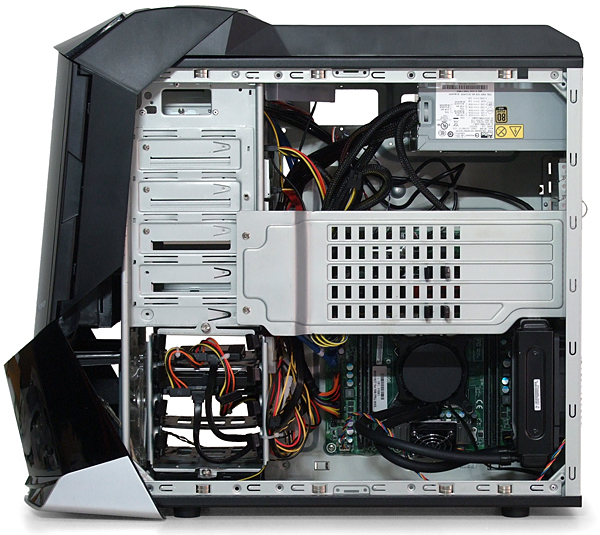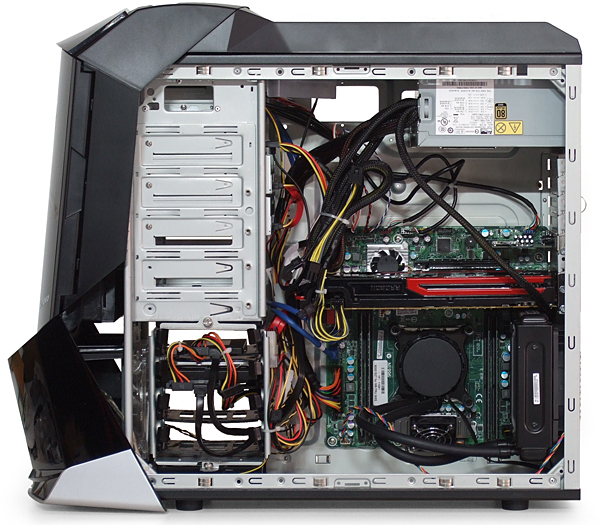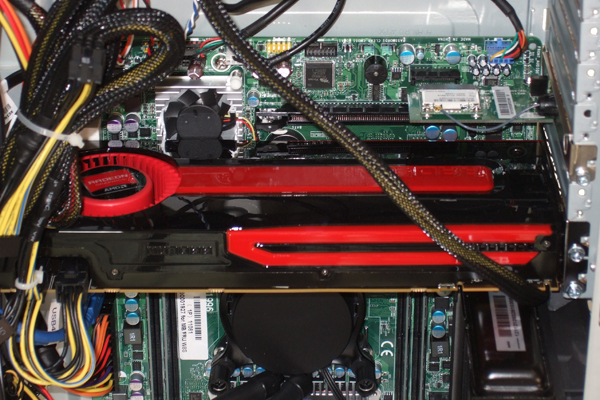Lenovo Erazer X700 Gaming PC Review: Is It As Fast As It Looks?
Famed for its ThinkPads, data center-oriented servers, and dependable office PCs, Lenovo is looking to carve out a piece of the enthusiast segment with its Erazer X700 gaming system. Can this sexy-looking setup stand up against our SBM configurations?
Inside Lenovo's Erazer X700
Lenovo uses a mid-weight sheet steel case and card bracket to prevent damage during shipping, along with extra-thick flexible foam packaging and a double cardboard box.
As a prosumer, I used to get terribly upset when I'd open a full ATX system and find a microATX motherboard inside. Improvements in on-board components have made add-in cards less necessary for most gamers, however.
The biggest problem we spot is that the single-band 802.11n Wi-Fi card must be removed to facilitate a CrossFire upgrade for the included Radeon HD 8950 graphics card.
No amount of packaging can completely protect the motherboard from the impact of a heavy CPU cooler in shipping, so Lenovo uses an unbranded version of Intel’s BXRTS2011LC closed-loop liquid cooler. Both the Intel and Lenovo solutions are manufactured by Asetek, and the 1.5” radiators that accompany them are halfway between Asetek’s 550LC and 570LC factory-configured options.
One problem of liquid cooling is that its remote fans no longer blow onto voltage regulator components. Lenovo solves this issue by adding a standard 60 x 10 mm fan and partial shroud over its PWM heat sink. We’d need something like Antec’s SpotCool to accomplish this task in our own builds.
Get Tom's Hardware's best news and in-depth reviews, straight to your inbox.
Current page: Inside Lenovo's Erazer X700
Prev Page Getting To Know Lenovo's Erazer X700 Next Page More Erazer X700 Features-
larsoncc I won the $2550 computer featured in the Q3 SBM Marathon. I believe their scores using that system were 'slightly' hampered by fact that one of the 760s that was going bad. After RMA'ing the card, and using the same overclocks as featured in the SBM article, as well as moving the system to a high airflow case (Corsair Carbide Air 540) the 3DMark score is 19,100 (http://www.3dmark.com/3dm11/7455484). Thanks Tom's!Reply -
chumly wtf resolutions are you testing? How about 1440p? Hardly ANYONE uses dual/triple monitor setups because the framerate sucks so entirely and 99% of the people on the planet don't have $5k to throw at a gaming PC. you are wasting your time. give us SINGLE monitor configs, for the love of god.Reply -
dudewitbow Reply12040927 said:....and wth is an HD 8950?!?!?!
HD 8XXX cards are rebranded 7XXX cards for OEMS to use for marketing, cause you know, uninformed Consumers love to think that larger number means better and that new products(despite not really being new) convinces them to buy it. an 8950 should be a rebranded 7950 -
SWEETMUSK the case is looking cool but,why they set the power at top?the power can't be hot it should set under the case and video card is not goodReply -
m32 They could've put a R9 280x in it, but this isn't meant for the guys on this site. This is meant for sucke...... cough..... the average consumer.Reply




